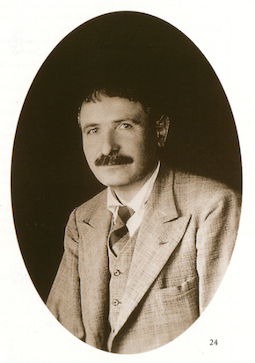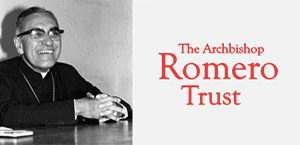Layman and two priests killed in WW2 on path to sainthood

Blessed Artemide Zatti
Source: Vatican News
An Argentinian layman and two Italian priests who died during the Second World War will be canonized soon. Two missionary bishops, two foundresses and three laywomen from Italy, Argentina, Spain and Poland are to be named Venerable, the Vatican has announced.
The first decree regarded Blessed Artemide Zatti, an Italian layman, born in Italy in 1880, whose family emigrated to Argentina when he was 17 and settled in Bahia Blanca. There he met the Salesians and entered the Congregation as a professed member, but he came down with tuberculosis. When he recovered he chose not to become a priest but to dedicate himself to the sick in order to fulfill a vow he made to Mary Help of Christians. He offered this service for the rest of his life at the Hospital of Viedma as vice-director, administrator, and nurse, and was appreciated and esteemed by his patients and their families, until he died of cancer in 1951.
Pope St John Paul II beatified Artemide Zatti in 2002. The miracle recognized on Saturday for canonization dates back to 2016 with the healing of a Filipino man from Tanauan Batangas, who suffered near fatal severe ischemic stroke, worsened by heavy bleeding. His family did not have the means to pay for his operation and brought him home on 21 August. Three days later he suddenly removed the nasogastric tube providing him with nourishment and oxygen, asked for something to eat, and in the following days, resumed his normal life. His brother, a Salesian coadjutor in Rome had prayed for intercession of Blessed Artemide Zatti.
The stories of martyrs and future Blesseds Fr Giuseppe Bernardi and Fr Mario Ghibaudo highlight their courage and faith to the point of offering their lives, in the face of a brutal hatred shown by their aggressors.
After the armistice of 1943, the town of Boves, was on the frontline of the war between German occupiers and the partisans. On 19 September, after a clash in which one man died on each side and two soldiers were taken prisoner, German Major Peiper threatened to destroy the town if his two captured men were not released, along with the body of the one who was killed.
Fr Giuseppe Bernardi and another person successfully mediated the situation, and obtained what was requested from the besiegers, but they did not keep their word. The German major then gave the order to attack and took the priest and another person, Antonio Vassallo, into an armoured car and forced them to witness summary executions and setting fire to homes.
After saving the girls of the orphanage and others, Fr Mario Ghibaudo visited someone who had been hit by German machine gun fire to give him Last Rites, but was in turn shot down by gunfire and mutilated by a soldier. Around 6pm, Fr Bernardi and the other man were taken to a courtyard, executed and set on fire.
The decrees signed by Pope Francis on Saturday also recognize the heroic virtues of the following seven Servants of God, currently considered Venerable by the Church.
Spanish Bishop Martino Fulgenzio Elorza Legaristi, born in 1899, a member of the Congregation of the Passion of Jesus Christ, worked in a Peruvian territory entrusted to him, marked by poverty. He often visited local parishes, going by foot, horseback or by canoe. He began the construction of a cathedral and new churches in the villages, and also took part in the first Sessions of the Second Vatican Council. He died in Lima in 1966.
Bishop Francesco Costantino Mazzieri, a member of the Friars Minor Conventual, originally from Abbadia di Osimo, born in 1889, was also a missionary. In 1930, he felt the call to evangelize far from Italy, and was sent with six confreres to what is now Zambia, in the district of Ndola (then Northern Rhodesia), a British colony at the time. For 36 years, he gave witness to pioneering evangelization that helped the Church grow despite the difficult and impervious conditions. He chose to reside in the rural area of Santa Teresa (Ibenga-Zambia) and his humility, and together with his great charitable sensitivity, he worked heroically taking care of lepers. He was loved by the people and died in 1983, always remembered for his personal holiness.
Lucia Noiret, born in 1832 in France, founded the Congregation of the Handmaids of the Sacred Heart of Jesus under the protection of St Joseph. After her novitiate with the Sisters of Charity, she was transferred to the Italian city of Imola as an educator in a facility for poor girls and orphans. When the Superior General decided to recall the religious, Sister Lucia, on the advice of the Bishop of Imola, Luigi Tesorieri, remained to serve at the facility. Several young women joined her and this was the first group of the future congregation. She died in Imola in 1899.
Casimira Gruszczyńska was born in 1848 in Kozienice (modern-day Poland), where she spent her entire life until her death in 1927. She made a vow of private chastity at the age of 10, which she renewed at the age of 21 with the permission of the parish priest during a Mass at the parish church. The following year, her mother died and the future foundress devoted herself to visiting the sick and teaching catechism to children. In 1875, she entered the Congregation of the Sisters of the Heart of Jesus, but when the Czarist regime decreed the dissolution of religious institutes on the territory of the Kingdom of Poland, members of the Congregation went into hiding, continuing to work discreetly without the recognition given by a religious habit. In 1882, she founded the Congregation of the Sisters of the Afflicted, dedicated to the care of the sick and suffering, subject to the Rule of the Franciscan Third Order, which she directed for 45 years. In 1922, Pope Pius XI awarded her the medal "Pro Ecclesia et Pontifice."
Aurora Calvo Hernández-Agero from Spain, born in 1901, lived in Béjar all her life. From a deeply Christian family, her brother was a priest and she wished to become a Discalced Carmelite, but the need to care for her elderly mother prevented her from entering the contemplative life. She worked as a catechist and strove in every way to deepen her inner life with intensity and care, consecrating herself to the Virgin Mary and showing a great passion for spiritual exercises. She died of a pneumonia in 1933.
Rosalia Celak was born in 1901 in Jachówka, Poland. At the age of 17 she took a private vow of chastity, and at 23, she left for Krakow where she stayed for a year with an elderly woman helping her with housework. While still in Krakow, the following year she began to work as an orderly for the sick in the surgical department of St Lazarus Hospital in the same city and, after about two months, she was transferred to the department of skin and venereal diseases. In 1927, she entered the Poor Clares of Krakow, but her weak health did not allow her to remain there and the following year she returned to her work in the hospital of St. Lazarus, gaining the trust and respect of all. In the final period her life, her faith grew strongly in mystical union with Jesus. She died at the age of 43 in Krakow in 1944.
Maria Aristea Ceccarelli was born in Ancona, Italy, in 1883, into a family that did not appreciate her. Her mother, illiterate, had a closed and very harsh character, while here father was violent, a gambler and alcoholic, taking an aversion to Aristea. The girl grew up in a world of loneliness, psychological and material poverty. She suffered from hunger and cold, and started work at a young age as a seamstress at six years old until she was 11, when she started working in a restaurant. Her parents force her to marry Igino Bernacchia, and the two agreed to live with her in-laws, where Aristea did domestic work and also worked in the bakery, butcher store and family grocery store. Her father-in-law and husband were also abusive and, unfortunately, in 1902, she suffered a serious and painful illness that led to the removal of her right eye. Aristea found comfort in constant prayer, and when her husband's work meant that they had to move to Rome, she entrusted herself to the spiritual guidance of two Camillians, living her mission in hospitals, particularly at the Umberto I Sanatorium, among those suffering from tuberculosis, especially children, and visiting the sick in their homes, consoling them and helping them materially. She died in Rome on Christmas Eve 1971.


















